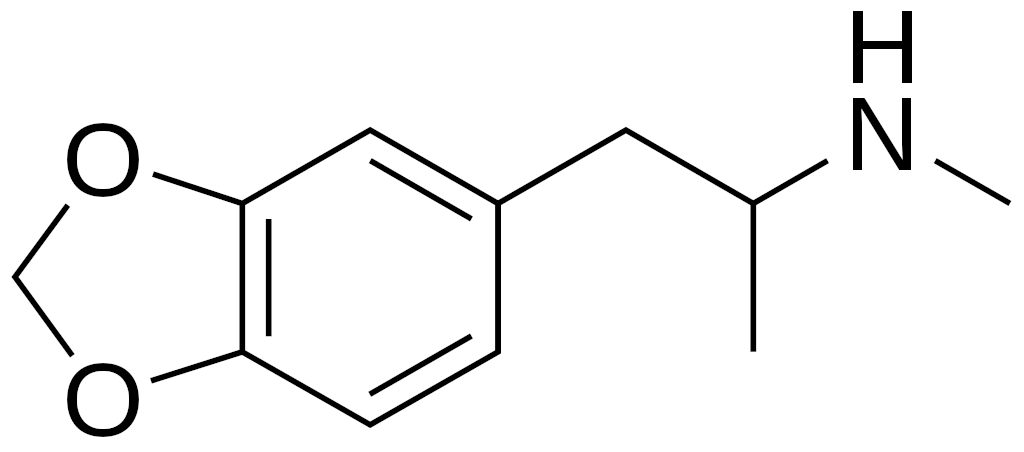MDMA

MDMA (3,4-Methylenedioxy-N-methylamphetamine), also known as ecstasy or molly, is a member of the group of phenethylamines. It is usually sold in tablet form, frequently mixed with other psychoactive amphetamine derivates like MDA (3,4-methylenedioxyamphetamine), MBDB (2-methylamino-1-(3,4-methylenedioxyphenyl)butane), and MDE (3,4-methylenedioxy-N-ethylamphetamine), or other cutting agents like m-CPP (meta-chlorophenylpiperazine) and PMA (4-methoxyamphetamine). It is consumed orally. In addition, yellowish or brownish crystals are no rarity on the black market.
The duration of MDMA’s effect varies from three to six hours, based on the dose. It is empathogenic (increases empathy) and entactogenic (“touching within”). Physically, MDMA is a stimulant, meaning it leads to an elevated pulse and blood pressure, reduced feelings of hunger and thirst , elevated body temperature, and more intense perception of the body. In addition, MDMA causes nausea, dryness of the mouth, and muscle cramps due to overdose. There is a danger of psychological dependency [1].
Reference
[1] MDMA (in German), drugscouts.de. (accessed December 22, 2021)




